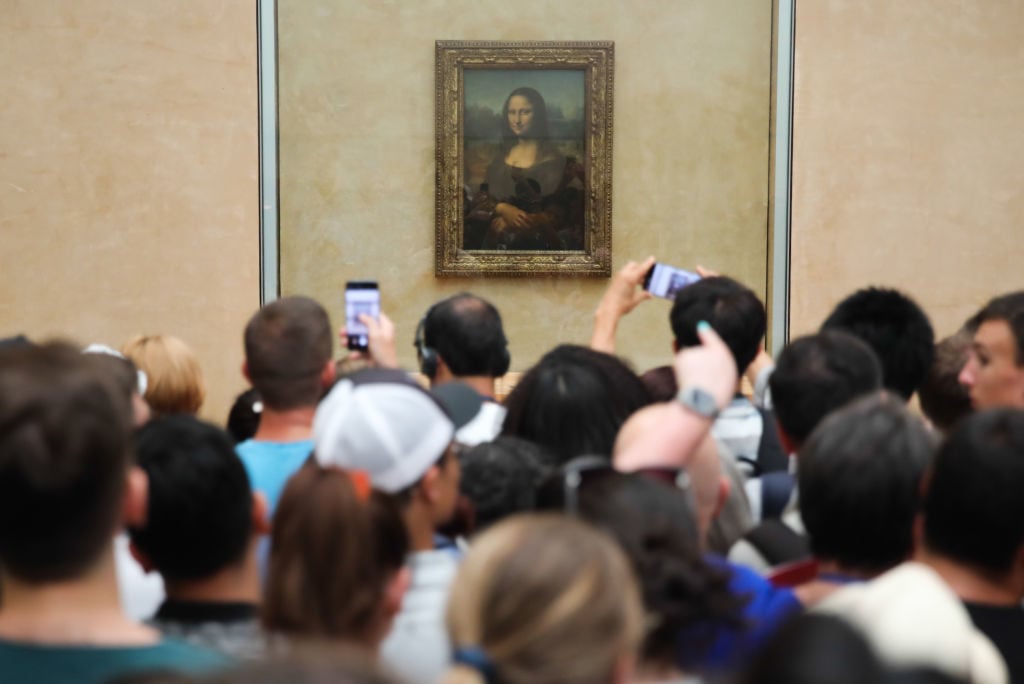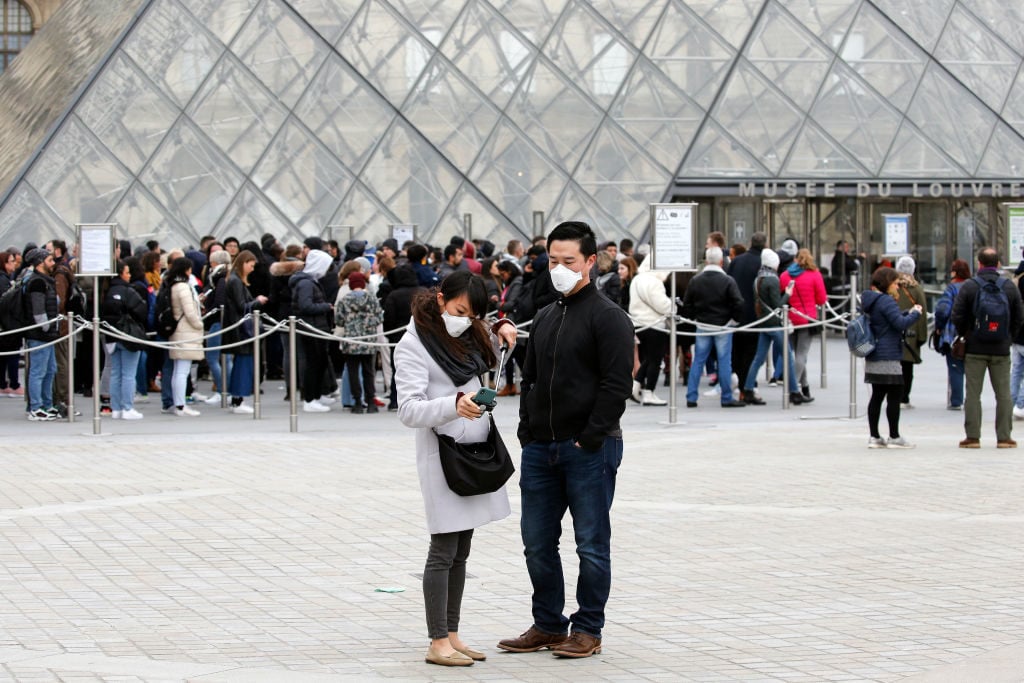Art World
The Mona Lisa Is on the Front Lines as the Louvre Reopens With Some New Safety Measures Against Disease
Staff agreed to reopen the world's most visited museum after a two-day closure.

Staff agreed to reopen the world's most visited museum after a two-day closure.

Kate Brown

In the Louvre, the Mona Lisa is flanked by guards who usually help keep the crowds moving through the packed Salle des États. But after staff forced the Paris museum to close Sunday amid safety concerns over the spread of the coronavirus, their routine has changed. Now, the guards stand still, and visitors are left to figure out their own flow through the gallery.
This is one of the emergency measures the Louvre has put in place after it reopened to the public on Wednesday, March 4. The French government has banned gatherings of more than 5,000 people after nearly 300 confirmed cases and four deaths from the infections. The Louvre welcomes around 30,000 visitors a day, six days a week.
Although the French government said the ban did not apply to the Louvre as visitors tend to be dispersed through its many rooms, its staff remained concerned and exercised their right to vote to abruptly shutter the museum on Sunday.

A couple wears protective masks in front of the Louvre Museum. Photo: Chesnot/Getty Images.
Louvre staff representatives met with the museum’s senior management and doctors on Tuesday, its regular closure day, to share their concerns about their safety as coronavirus, or COVID-19, spreads.
They discussed updated safety precautions, including static guards in front of the Mona Lisa, the museum’s main draw. After a vote on Wednesday morning, the museum reopened yesterday afternoon. Guards are not wearing masks or gloves as they requested, but they have been issued hand sanitizer.
But will people be able to control themselves in front of the most enigmatic smile in the world? Staff are skeptical that the security measures are enough, and they are also unsure they will work out in terms of visitor flow. “People are going to wait around in front of the painting,” one guard told the New York Times. “It will be messy.”
Ticket salespersons will work as usual but behind glass kiosks; otherwise, the museum agreed that the majority of ticket sales would take place through self-service machines.
On the museum’s website it “invites” visitors from coronavirus affected areas to postpone their museum visit.
Museums and historic sites in Europe that are large gathering places popular with international tourists are bracing themselves as coronavirus spreads. Museums in Northern Italy, which has borne the brunt of early outbreaks, reopened this week after a temporary closure but visitors are being told to keep three feet apart from one another.
Various UK museums Artnet News contacted said they are monitoring the situation. A spokesman for Historic Royal Palaces, which manages the Tower of London and other large heritage attractions, says that it has installed extra handwashing stations in public and staff areas.